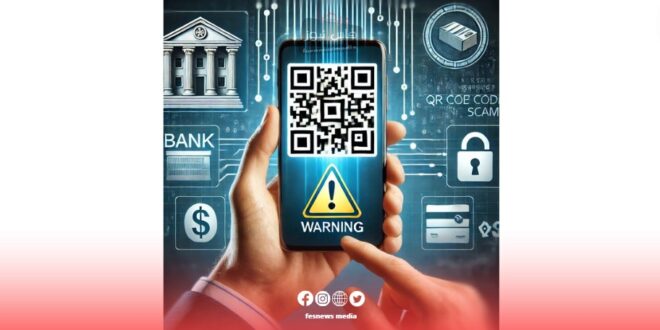Smartphones have become an integral part of our daily lives with the rapid technological advances the world is witnessing, and with the proliferation of technologies such as QR codes, the security risks associated with them have increased. With the widespread use of technologies such as QR codes, the security risks associated with them have increased, prompting Morocco’s Digital Content Observatory to issue an important warning to citizens. The Observatory, known for its pioneering role in protecting users and raising awareness of digital risks, emphasised that scanning unknown QR codes can lead to the loss of everything in a person’s bank account.
What is a QR code?
A QR code is a code made up of black and white squares that can be scanned using a smartphone camera to access information or links quickly and easily. This technology is used in many areas, such as advertising, e-payments, website logins, and many other services. However, these benefits come with significant risks if the codes are used illegally.
How can QR codes be dangerous?
Malicious links: Cybercriminals can create QR codes that contain links to phishing sites. When the code is scanned, the user is directed to a site that looks legitimate but is designed to steal their personal and financial information. Once this information is entered, criminals can use it to access your bank accounts and steal your money.
Downloading malware: Some QR codes can lead to the download of malware onto your smartphone. This can take many forms, such as spyware that monitors your phone activity and steals your data, or ransomware that encrypts your files and asks you to pay a ransom to decrypt them.
Unauthorised actions: Some codes can contain commands that trigger unauthorised actions on your phone, such as transferring money from your bank account, sending expensive text messages, or even taking full control of your device.
Tips to avoid falling into the trap
Check the source: Before scanning any QR code, check the source and verify its authenticity. Do not scan codes from unknown or suspicious sources. If you receive a QR code via email or text message, make sure it is from a trusted source before scanning it.
Use secure apps: Use trusted apps to scan QR codes. Some apps offer extra protection against malicious links and warn you if the code contains suspicious content.
Monitor bank accounts: Monitor your bank accounts regularly to check for any unusual or unauthorised activity. If you notice anything abnormal, contact your bank immediately to take action.
Security updates: Regularly update the operating system and apps on your phone to get the latest protections against malware. Security updates help close loopholes that criminals can exploit.
Use anti-virus software: Installing a reliable anti-virus programme on your phone can provide an extra layer of protection. These programmes can detect and delete malware before it can cause any damage.
Real-life examples
Reports confirm that many people around the world have been exposed to cyber attacks via QR codes. In one case, criminals placed fake QR codes in public places, such as cafes and restaurants, and when scanned, users were directed to malicious websites that stole their bank information. In another case, criminals used QR codes to infect phones with spyware, giving them access to sensitive data and personal photos.
Conclusion
Morocco’s Digital Content Observatory calls on all citizens to be cautious when dealing with QR codes and to confirm their origin before scanning them. Digital awareness and taking preventive measures can protect you from falling victim to cybercriminals and ensure the safety of your financial and personal data. By following these tips and guidelines, we can all contribute to building a safer and more trusting digital environment.
Source: Morocco Digital Content Observatory
 فاس نيوز ميديا جريدة الكترونية جهوية تعنى بشؤون و أخبار جهة فاس مكناس – متجددة على مدار الساعة
فاس نيوز ميديا جريدة الكترونية جهوية تعنى بشؤون و أخبار جهة فاس مكناس – متجددة على مدار الساعة













